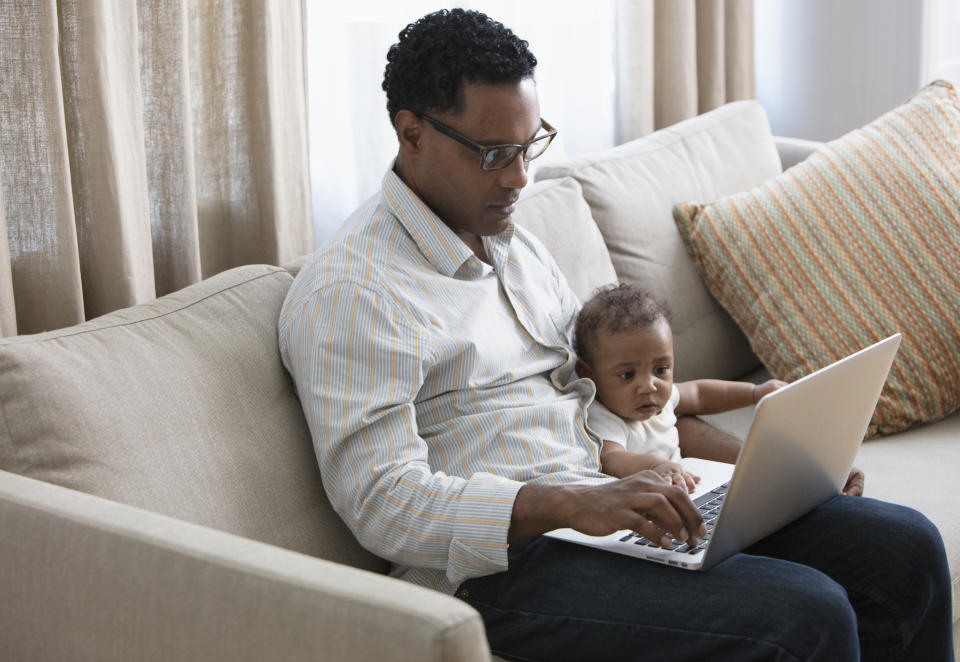Working from home successfully takes effective communication and embracing the 'outfit mullet'

Ontario Premier Doug Ford declared a state of emergency due to COVID-19 on Tuesday, which will require thousands of people to work from home. Experts say the key to successful remote work is to have open lines of communication with managers, and to act like you’re working in an office.
Brian Kropp, vice president at research firm Gartner, said in an interview that from manager to employee, as well as employee to employee, there has to be “as much visibility as possible into workflows.”
In a regular office, employees and their managers have the ability to talk to each other and check-in more often, something that Kropp says will dramatically change as more work from home.
“You need to have some sort of way to have moments where there are just updates. Some companies, at 9 a.m. on Tuesday and Thursday morning, will have a quick 30-minute standing meeting where everybody who’s working remotely calls in and talks about what they’re working on,” he said.
Kropp said other companies have used Google Docs as a way to have people jot down daily what they’re working on.
“One of the biggest shifts that happen by going from in-person to remote is you don’t have the serendipity of bumping into people at the coffee machine while you’re getting lunch,” he said.
Follow workplace etiquette, embrace the “outfit mullet”: Shopify, Google
Many companies already have work from home policies, including Ottawa-based e-commerce company Shopify.
Thirty per cent of its employees already work from home, it said in a March 11 tweet. That was the same day it announced that all of its workers will work from home starting March 16 due to COVID-19.
“Of course Shopify is no stranger to remote work,” Shopify CEO Tobias Lütke tweeted on the day of the announcement. “We actually closed our offices once for a [one] month period to build empathy for the remote workers of Shopify.”
Dayna Winter, a writer and content marketer at Shopify, offered useful tips on Twitter, like to “embrace the ‘oufit mullet’: business on top, couch slug on the bottom.”
“You only need to look decent from the waist up for meetings now,” she wrote. “Repurpose the extra time you’d normally spend commuting/looking presentable - get fresh air, whatever. I get most of my housework done in the [morning] before I start my day.”
She also added moving around the house and working from different spots helps.
Google also instructed its employees to work from home until at least April 10, as first reported by Business Insider.
The California-based search giant offered eight tips to help those who have never worked from home do it successfully.
Google’s tips include scheduling meetings, sharing goals and updates regularly, and maintaining workplace etiquette.
“Just because your team isn’t at the office doesn’t mean they’re not busy. Check calendars before scheduling meetings, and when you reach out via chat, start by asking if it’s a good time to talk,” Google wrote.
“You can also proactively inform your co-workers of your own availability by setting up working hours in Calendar. That way, if a team member tries to schedule a meeting with you outside of your working hours, they’ll receive a warning notification.”
Trust your employees, focus on outcomes
Kropp said there are many effective tools to successfully work from home, but major challenges will emerge.
Employees, he said, will have to become “a lot more intentional about what they do.”
“You actually have to think through and plan to meet with people rather than just meetings happen,” he said.
Kropp also said that managers will now have to “trust your employees a lot more.”
“If you’re a manager that’s been used to checking in with people frequently by providing a lot of feedback, visually seeing people work and using your own personal visual conformation that people are working, those sorts of behaviours do not work at all in a remote environment.
“You have to trust your employees are getting stuff done. You have to go with a mentality of ‘I will trust them,’ rather than ‘I will observe them and track them.’” he said.
As part of the state of emergency, daycares and schools have been instructed to shut down. Kropp said that this too will change the dynamic in households where parents have young children.
“People who have kids are going to be in a situation where they’re going to have to make lunch for their kids, they have to use an iPad to help them stay occupied during the day,” he said. “So the idea that you’ll be able to get that immediate response over Slack [or other messaging boards] is going to be incredibly difficult.”
Kropp said it would be helpful if organizations set out expectations on what responsiveness looks like. He added that communication should focus on what the company cares about, not about how the work is going to get done.
“Focusing on the outcomes you achieve and giving you a lot more flexibility about how you’re going to be doing work,” he said.
Download the Yahoo Finance app, available for Apple and Android and sign up for the Yahoo Finance Canada Weekly Brief.

 Yahoo Finance
Yahoo Finance 